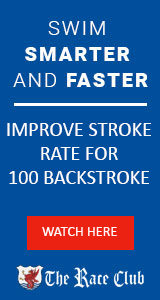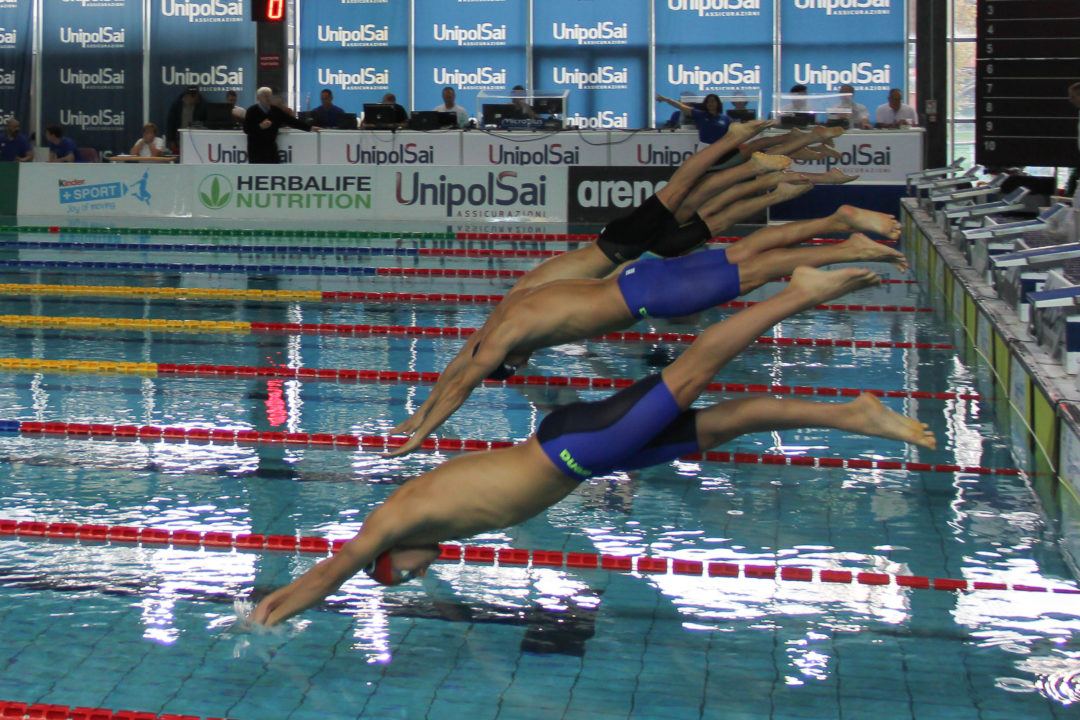Courtesy of Gary Hall Sr., 10-time World Record Holder, 3-time Olympian, 1976 Olympic Games US Flagbearer and The Race Club co-founder.
Swimming fast is primarily the result of the effective application of four broad basic sciences: Physics, Physiology, Kinesiology and (lumped together) Neural, Cognitive and Behavioral Sciences. All four of these basic sciences interact and, to some degree, overlap and are extremely important in helping an athlete swim fast. In order to become the best swimmer or swim coach possible, we need to develop an understanding of all four sciences and how they inter-relate. The following is a simplistic description of the four sciences.
Physics in swimming relates mostly to Newtonian and Fluid Mechanics. Our ability to quantitate frontal drag in both active (while swimming) and passive (fixed positions) forms, and to understand how the fluid dynamics and flow (vortices) of a swimmer affect his ability to generate propulsion largely influence the swimming techniques we should teach. Of all four basic sciences, the application of physics is perhaps the least understood or studied in the sport of swimming.
 Physiology in swimming relates to our ability to provide sufficient energy, and from the right systems, to enable the muscles involved in the ideal biomechanical swimming motions. This will sustain propulsion for the duration of the competitive event. It also relates to our ability to develop the right muscle composition in order to maximize and sustain propulsion. Physiology involves a large number of human organs and systems, most of which can be improved with training. Some cannot. The best swimming coaches in the most advanced swimming nations of the world have done an incredibly good job at improving the physiology of swimmers through conditioning and training.
Physiology in swimming relates to our ability to provide sufficient energy, and from the right systems, to enable the muscles involved in the ideal biomechanical swimming motions. This will sustain propulsion for the duration of the competitive event. It also relates to our ability to develop the right muscle composition in order to maximize and sustain propulsion. Physiology involves a large number of human organs and systems, most of which can be improved with training. Some cannot. The best swimming coaches in the most advanced swimming nations of the world have done an incredibly good job at improving the physiology of swimmers through conditioning and training.
Kinesiology relates to our ability to understand the ideal motions that maximize a swimmer’s velocity for the duration of the event. Kinesiology includes more than biomechanical motions, however. It also considers how the physiology, anatomy, and psychology influence the ideal motions of an athlete. One might assume that the ideal biomechanical motions of a swimmer also produce the maximum amount of propulsion, but that is not necessarily true. A swimmer’s acceleration or deceleration at any moment is determined by the net difference between his propulsion and his frontal drag forces. To reach maximum sustainable velocity, a compromise often needs to be reached between the motions that produce the most propulsion and those that reduce frontal drag. The biomechanics of any swimmer’s motions are often determined and/or restricted by a limited amount of flexibility in key joints, such as the shoulder, hip, or ankle.
Neural, Cognitive, and Behavioral Sciences in sports relates to the power or ability of the mind to enable the body to perform at the highest possible level. Virtually every cognitive function we perform is controlled by our minds. Swimming is no exception. Neuromuscular adaptation and responses are two of the most important aspects of training and competing. Mental training in the sport of swimming is still in its infancy, compared to what is known about improving the physiology and biomechanics of swimmers. I believe that there is a great opportunity for improvement in these sciences.
This week, our Race Club subscribers in Lanes 2, 3, and 4 will find a webisode showing an excellent technique to improve stroke rate for the 100 backstroke. Hope you will enjoy!
Yours in Swimming,
Gary Sr.

Gary Hall, Sr., Technical Director and Head Coach of The Race Club (courtesy of TRC)
Like The Race Club on Facebook
Follow The Race Club on Instagram
Follow The Race Club on Twitter
Connect to The Race Club / Gary Hall Sr. on Linkedin
THE RACE CLUB
Because Life is Worth Swimming, our mission is to promote swimming through sport, lifelong enjoyment, and good health benefits. Our objective is for each member of and each participant in The Race Club to improve his or her swimming performances, health, and self-esteem through our educational programs, services and creativity. We strive to help each member of The Race Club overcome challenges and reach his or her individual life goals.
The Race Club provides facilities, coaching, training, technical instruction, video, fitness and health programs for swimmers of all ages and abilities. Race Club swim camps are designed and tailored to satisfy each swimmer’s needs, whether one is trying to reach the Olympic Games or simply improve one’s fitness. Our programs are suitable for beginner swimmers, pleasure swimmers, fitness swimmers, USA swimming or YMCA swimmers, or triathletes; anyone who wants to improve swimming skills. All of our Race Club members share an enjoyment of being in the water and use swimming to stimulate a more active mind and body.

